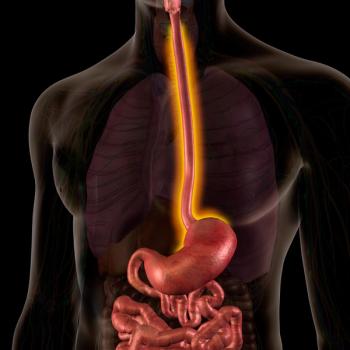
- MHE December 2021
- Volume 31
- Issue 12
Digital Therapeutics Shaping the Future of Care
Prescription digital therapeutics are FDA approved and available only by prescription. Their developers are aiming to get them covered by insurers.
The world is awash in apps. There are almost 3 million of them on Google Play and 2 million on the Apple Store. Health-related apps make up a small fraction of this astounding total, but still number in the tens of thousands. Some are frivolous and others, merely innocuous, serving up reminders about your daily steps, the calorie counts of your meals or the best time to go outside for exposure to sunlight to crank up your vitamin D levels.
But there is also a more serious side to digital healthcare interventions that puts some of them on par with drugs and devices and stirs up a beehive of questions: the need for clinical trials, possible harms, coverage by insurers and whether they might help close healthcare disparities or wedge them open wider. A handful of developers are trying to separate themselves from the teeming masses of apps by getting their products approved by the FDA through a process designed for medical devices. Akili Interactive’s EndeavorRx, a game-based treatment for attention deficit hyperactivity disorder, was approved by the FDA in June 2020. A few months later, the agency approved NightWare’s namesake product, which uses an Apple Watch and iPhone and a proprietary algorithm to recognize when people are having nightmares and triggers a vibrating signal to jog them out of the disturbing dream.
Pear Therapeutics in Boston has three FDA-approved products: reSET for substance use disorder, reSET-O for opioid use disorder and Somryst for chronic insomnia. Proponents, particularly Pear, are positioning these FDA-approved products as “prescription digital therapeutics,” or PDTs, that clinicians will prescribe as they would a drug or a device. Corey McCann, M.D., Ph.D., president and CEO of Pear, says he is “not the PDT police” but offers up this definition of a PDT: “software to treat human disease.” McCann emphasizes that the software, not an ancillary device, is doing the treating so, for example, a continuous glucose monitor would not not be a PDT under his definition. But the digital therapeutics are not recognized as a separate category in FDA regulations, so the dividing line between what is a PDT and what is not is open to interpretation. Pear published a prescription digital therapeutic “digest” in October that listed just six PDTs: its three products, EndeavorRx, NightWare and Mahana Therapeutic’s Parallel, a PDT for irritable bowel syndrome.
Investors are plowing money into the companies that are developing PDTs. Mahana says it has raised a total of $81 million, including $61 million in Series B funding that it announced in August 2021. Pear announced in mid-November that it had landed $50 million in additional investment from an affiliate of Thimble Point Acquisition, a special purpose acquisition company that it plans to merge with so it can be traded publicly. Altogether the private investment in Pear and Thimble Point is expected to reach $175 million, according to company releases. McCann says Pear has 14 other products in the pipeline, and he talks about the company’s “ongoing partnership engine that continues to bring in some of the best assets that are available outside of Pear.”
The PDTs may put payment and coverage of digital therapeutics in a new light. Jeff Dunn, Pharm.D., MBA, a veteran of the PBM industry and a former executive with Magellan Rx, says the app developers traditionally targeted employers and employer groups and have steered clear of insurers and PBMs. A user-friendly app to help people lose weight might have been added to the benefits package as an inexpensive perk and signifier that the company cares about its employees’ health without too much concern about a return on investment.
In some cases, Dunn says, the digital therapeutics have been seen as extension of disease and care management for groups of employees who are vulnerable to certain health problems. There might be some supporting evidence, but they haven’t gone through an FDA approval process and the goal is typically health or wellness. Dunn says that one of his previous employers owned a railroad, so a program to address musculoskeletal problems was added “because they had people out on the railyard.” Another company owned by that employer was considering Sleepio, a digital therapeutic for insomnia, and Daylight, a digital therapeutic for anxiety, because its employees are pilots.
Dunn says employers are being courted by the manufacturers of these types of digital therapeutics but “I don’t think employers are embracing this wholeheartedly.” Although the cost is typically moderate, there’s a lack of supporting evidence.
“It’s like care management and disease management,” says Dunn. “How you report an ROI (return on investment) and outcomes and cost savings from those programs is a total black hole, and it always has been. I think it’s more of that.”
Patrick Gleason, Pharm.D., BCPS, FCCP, FAMCP, assistant vice president, health outcomes, at Prime Therapeutics, the PBM for 23 Blues plans, says several companies with digital therapeutics for diabetes are marketing themselves to large, self-insured employers. “The vendors who created them are going right to the self-insured employers and the human resources department and the people there who don’t have a lot of expertise in medical literature evaluation and convincing them that these are something that they should be paying for.”
Dunn says Pear and the other PDT makers want to get out of the gray area and circumventing insurers. “The Pears of the world,” he says, “they want coverage, they want reimbursement, they want to legitimize it, they want prescribers prescribing it — and they want to get (paid) more for it.“
FDA approvals
Of course, the imprimatur of FDA approval is perhaps the surest way of garnering that legitimacy. Besides, as McCann points out, the only way to make a claim that a digital therapeutic treats a disease, as opposed to a vaguer claim of it helping with health and wellness, is FDA approval.
Pear’s first product, reSET, was approved in September 2017 as a treatment for alcohol, cocaine, marijuana and stimulant substance use disorders. The FDA press release heralding the approval noted some of the qualifications: that reSET is intended to be used with outpatient therapy and not intended for use as a treatment for opioid dependence (Pear’s follow-on PDT for opioid use disorder, reSET-O, was approved in December). The supporting clinical trial for reSET was a 12-week study that enrolled about 400 patients who either received standard therapy or standard therapy with the desktop version of reSET. Pear’s press release about the approval says the patients in the reSET arm of the study received a reduced amount of face-to-face counseling. The patient information sheet for the reSET notes, though, that it is not intended to reduce face-to-face time with the clinician. Data from that trial showed a marked difference in abstinence among the patients in the reSET arm compared with the control group (40.3% vs. 17.6%).
The efficacy claim for reSET-O is more limited. Results of the supporting clinical trial did not show the PDT as having an effect on drug use. Instead, the data from the trial showed that patients in the reSET-O group more likely to stay in a treatment program than patients in the control group (82.4% vs. 68.4%). McCann said that research since the FDA approval has shown that reSET-O does have an abstinence effect. Like reSET, reSET-O is supposed to be used in conjunction with treatment — in this case buprenorphine, an opioid that is prescribed to replace more harmful opioids — and contingency management therapy, a mode of therapy that links behavioral goals, such as abstaining from using opioids, to rewards.
Pear got reSET approved by the FDA by putting it on a regulatory pathway at the agency known as “de novo classification process” that was created in 1997 for novel medicaldevices posing low to moderate risk. ReSET-O and Somryst, Pear’s PDT for chronic insomnia, were approved under the FDA’s 510(k) approval process that allows devices on the market if the agency deems them as being “substantially equivalent” to previously approved “predicate” devices. ReSET was the predicate for reSET-O and Somryst.
NightWare, EndeavorRx and Mahana’s Parallel were also approved using the de novo pathway and had supporting evidence from clinical trials. NightWare was studied in a 30-day, sham-controlled study of 70 patients. The FDA said it reviewed multiple studies of EndeavorRx that included a total of more than 600 children. Mahana supported its application for Parallel with evidence from a trial of 558 patients. In November, the agency approved AppliedVR’s EaseVRx, a prescription virtual reality system that uses cognitive behavioral therapy to address chronic low back pain. That approval was based on a trial that enrolled 179 back pain patients,
Is it time for the FDA to develop a regulatory pathway explicitly for digital therapeutics? McCann is not a fan: “This is a pathway that we’ve made work three times, and I think you have seen the rest of the space start to make it work,” he says of de novo. “I think the argument for a bespoke pathway tends to come from organizations that haven’t made this pathway work.”
Insurance coverage
FDA approval undoubtedly lends PDTs credibility. But like everything else in U.S. healthcare, PDTs are not really going to catch on — and the companies developing them are not going to be successful businesses — until insurers and other payers start covering them.
Pear has had recent success with persuading insurers to cover their PDTs. In October, the company announced that MassHealth, Massachusetts’ Medicaid program, intends to cover reSET and reSET-O. In September, it announced that it had entered into a value-based agreement with Prime for those two PDTs.
Neither Prime nor Pear is disclosing the exact terms of the deal, but the broad outlines are that Prime’s payment for the two PDTs will hinge, in part, on metrics measuring hospital inpatient stays, total healthcare cost and physician engagement; one important feature of reSET and reSET-O is that they supply information about patients to their physician. ReSET and reSET-O are priced at about $1,600 per three-month period, so presumably Prime’s Blue plans will pay less if the agreed-upon metrics aren’t met.
McCann is nothing if not sanguine about value-based contracts — partly, he says, because of the data that PDTs generate by virtue of being digital. “It’s not that you do a non-valued-based agreement and then you capitulate and do a value-based agreement. That’s the way pharma works. That is not the way PDTs work,” McCann says. “I think value-based agreements are what’s best for both the manufacturer and the payer because you have the data to be able to take the risk that’s in your best interest.” He also mentions the results of a Pear-funded study published in ClinicoEconomics and Outcomes Research in October that showed $2,700 in cost savings per patient over nine months among those who “engaged” with reSET-O.
Gleason, who was involved in Prime’s negotiations with Pear, says value-based contracts for digital therapeutics flip the script. Value-based contracts for drugs put the onus on the payer to track the outcomes and metrics that factor into the value-based payment adjustment, he says. But in this case, the data collection and reporting are falling to Pear. That shift, says Gleason, saves Prime time and effort. Another advantage of value-based contracts for digital therapeutics is that, so far, they fall outside Medicaid’s best price rules, which can put constraints on the value-based cost adjustments that payers might otherwise seek.
Still, there’s a good deal of uncertainty about how exactly the Prime-Pear value-based contracting is going to play out. Prime is the PBM for 23 Blues plans, but it is up to those plans whether they will enter into the deal that Gleason and his colleagues have worked out with Pear.
Equity issues
There are countless number of academics, consultants and “industry observers” who devote themselves to examining every nook and cranny of the U.S. pharmaceutical industry. Roger Vilardaga, Ph.D., is a member of a relatively small, but growing, group of experts studying digital therapeutics. Vilardaga, an assistant professor in the Department of Psychiatry and Behavioral Sciences at Duke University, says the worry several years ago among behavioral researchers and others was that regulation might stifle the innovation of digital therapeutics. Now with the flood of healthcare apps, the concern has shifted to, at best, lack of efficacy of many digital therapeutics, to, at worst, their being misleading and harmful.
Lack of efficacy when it comes to forever problems like losing weight or getting more exercise would be nothing new. But in the context of a problem like opiate addiction, lack of efficacy and possible harm converge, Vilardaga says. “If you have an opiate addiction and you recommend something like crystal therapy or positive thinking, it can be harmful for the individual to pursue those options rather than legitimate, evidence-based alternatives.”
Vilardaga was the lead author of study published last year in Current Addiction Reports that reviewed 59 opioid-related apps available on Google Play. More than half of the apps had data privacy language that fell short of the criterion in the American Psychiatric Association’s App Evaluation Model and just one — reSET-O — met all eight of the criteria of quality in the association’s app model. Running digital therapeutics through the gantlet of FDA approval will presumably help address some of the efficacy issues, although the current proportions are sobering: a handful of FDA-approved PDTs versus the 50,000-plus apps. Vilardaga also pins some hope on the creation of libraries of apps, curated by independent experts, or an accreditation process.
Winnowing for efficacy and safety would begin to solve one set of problems with apps and digital therapeutics, but not others.
“Just because a device is evidence-based and has been regulated doesn’t mean it is going to promote health equity,” Vilardaga says.
With apps and digital therapeutics, there’s the barrier of getting people to actually use them. Access to Wi-Fi and high-speed internet is certainly a factor, but so are the products themselves — the language they use, the design elements they feature, the intuition they tap into. For pharmaceuticals, there are decades of experience and study about how to deliver and get people to take prescribed medication. Vilardaga calls it “implementation science” and says it is lacking for digital therapeutics.
“I think there’s implementation science research that needs to be conducted head-on to be able to integrate these digital therapeutics into the actual, real-world practices,” Vilardaga adds.
Articles in this issue
almost 4 years ago
Oral and Dental Health is Crucial. But Access to Coverage is Spotty.almost 4 years ago
Health Insurance Markets Are Concentrated — and Getting More Soalmost 4 years ago
Is Cancer Screening Getting Back to Normal?almost 4 years ago
It’s Steady as She Goes in Employer-Based Health Insurancealmost 4 years ago
Value-Based Care in Oncology Gets off to Shaky Startalmost 4 years ago
NSCLC Therapy is Increasingly TargetedNewsletter
Get the latest industry news, event updates, and more from Managed healthcare Executive.
















































